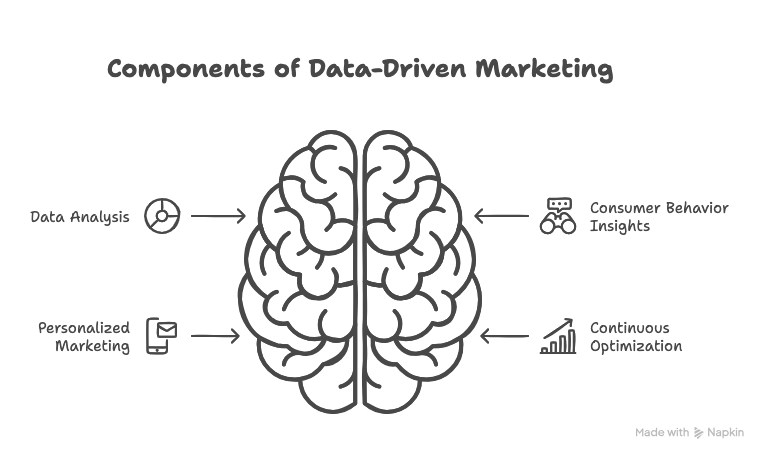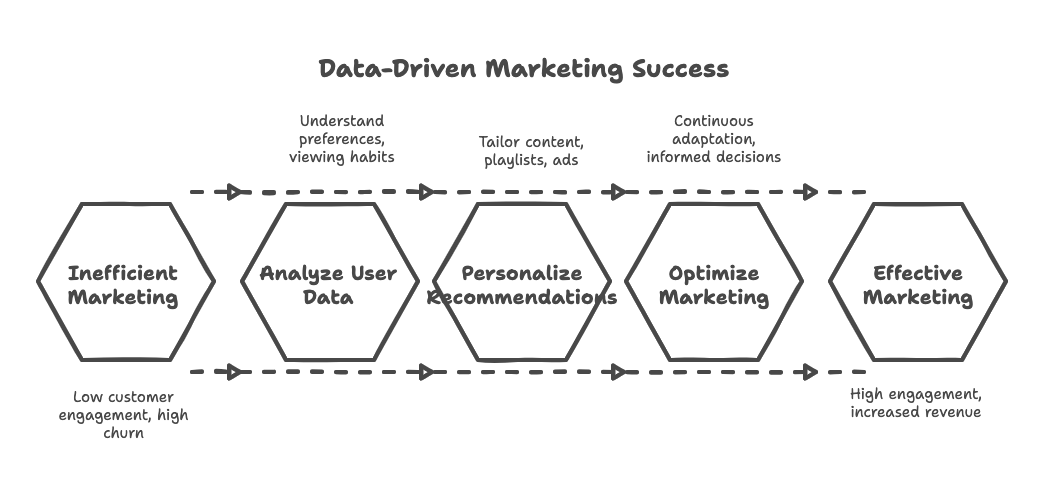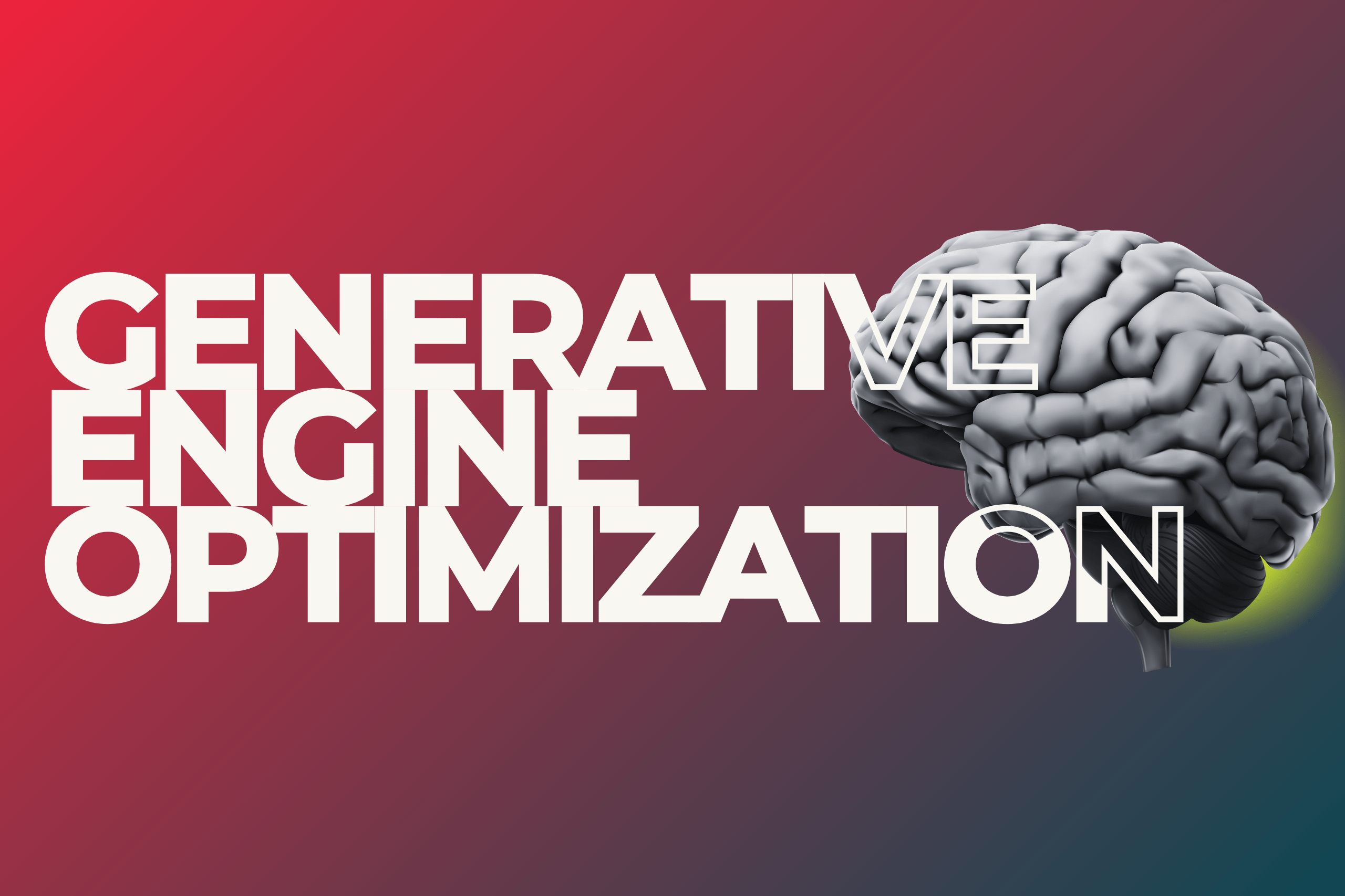Contents
ToggleIntroduction to Data-Driven Marketing
Data-driven marketing is a strategic approach that utilizes data analysis and interpretation to guide marketing decisions and initiatives. In an era characterized by rapid technological advancements and excessive information generation, businesses find themselves navigating an increasingly complex market. Data-driven marketing emerges as a vital methodology for organizations seeking to obtain a competitive edge by understanding and addressing consumer needs more effectively.
At its core, data-driven marketing leverages large datasets to derive insights about consumer behavior and preferences. By analyzing patterns in customer interactions, organizations can identify trends that inform product development, promotional strategies, and customer engagement tactics. This analytical practice enables businesses to tailor their marketing strategies to specific segments, thus enhancing overall effectiveness. The result is a more personalized marketing approach that improves engagement and conversion rates among target audiences.
The significance of data-driven marketing in the modern business environment cannot be overstated. As consumers increasingly expect personalized experiences, businesses are challenged to harness the potential of data to meet these demands. Through the collection and analysis of data from various sources—including online interactions, customer feedback, and transaction history—organizations can develop a sophisticated understanding of their audiences. This comprehensive insight empowers marketers to make informed decisions, ensuring that the right message reaches the right person at the right time.
Moreover, the integration of data-driven strategies facilitates continuous optimization of marketing efforts. By constantly monitoring performance metrics and consumer responses, companies can adjust their tactics in real-time, ultimately leading to enhanced efficiency and effectiveness. As competition continues to intensify across various industries, the adoption of data-driven marketing practices has become essential for achieving sustainable growth and success.
The Importance of Data in Marketing
Data plays a crucial role in today’s marketing landscape, serving as a fundamental pillar for informed decision-making. The increasing availability of data has revolutionized how businesses approach their marketing strategies, enabling them to gain in-depth insights into customer demographics, purchasing patterns, and market trends. By leveraging data effectively, organizations can tailor their marketing initiatives to meet the specific needs and preferences of their target audiences, resulting in more effective campaigns and improved return on investment (ROI).
One of the primary advantages of data-driven marketing is the ability to gain a deeper understanding of customer demographics. By analyzing data sets that include age, gender, location, and other relevant variables, businesses can develop detailed profiles of their customer segments. This segmentation enables marketers to create personalized campaigns that resonate with specific groups, ultimately leading to higher engagement rates and customer loyalty.
In addition to demographics, data also reveals critical insights into buying patterns. By examining purchase histories and browsing behaviors, organizations can identify trends that inform when and how to market their products or services. For instance, analyzing seasonal trends can enable businesses to adapt their promotional strategies to align with peak buying times, thus maximizing sales opportunities.
Moreover, market trends are continuously evolving, driven by various factors such as economic changes, advancements in technology, and shifts in consumer behavior. Keeping a pulse on these trends through data analysis allows businesses to remain agile and competitive. Understanding what resonates with consumers today can guide future marketing efforts and help companies innovate effectively.
In summary, the importance of data in marketing cannot be overstated. Through comprehensive analysis of customer demographics, buying patterns, and market trends, businesses can refine their marketing strategies. This data-driven approach not only enhances customer satisfaction but also maximizes ROI, providing a solid foundation for long-term success in the dynamic world of marketing.
Types of Data in Marketing
Data-driven marketing hinges on the effective use of varied data types, primarily categorized into qualitative and quantitative data. Understanding the distinctions between these data types is crucial for marketers aiming to implement informed strategies. Quantitative data refers to numerical data that can be measured and analyzed statistically. It encompasses metrics such as sales figures, website traffic, conversion rates, and customer demographics. This type of data is invaluable for evaluating the performance of marketing campaigns and deriving patterns based on hard facts.
On the other hand, qualitative data provides insights into customer behavior and preferences through non-numerical data. It is often gathered through methods like interviews, focus groups, and open-ended surveys. This type of data paints a more nuanced picture of consumer attitudes, motivations, and emotional responses, enabling marketers to create more personalized and impactful marketing messages.
An important distinction within marketing data is the differentiation between primary and secondary data. Primary data is information collected directly by marketers for a specific purpose, such as conducting a survey with target customers or tracking interactions with a new product. This data is often more relevant and specific to the current marketing context, albeit requiring more time and resources to obtain.
Conversely, secondary data consists of information that has already been collected and published by others. This includes research reports, industry statistics, and competitive analysis. While secondary data can be less tailored to specific needs, it serves as a cost-effective means of gathering insights and establishing market trends. Both primary and secondary data play essential roles in crafting comprehensive marketing strategies, as they allow businesses to leverage existing knowledge while also gaining new insights tailored to their unique circumstances.
Collecting Data for Marketing Purposes
Data-driven marketing relies heavily on the ability to collect relevant and accurate data to inform strategies and decisions. Various methodologies exist for gathering marketing data, each serving unique purposes and facilitating insight into consumer behavior and market trends. Among the most prevalent techniques are surveys, which provide direct feedback from target audiences. These instruments can be conducted online, via phone, or in person, allowing marketers to obtain opinions, preferences, and experiences that guide campaign development.
Social media analytics represent another valuable avenue for data collection. Platforms such as Facebook, Twitter, and Instagram offer rich datasets regarding user interactions with content. By leveraging these analytics, marketers can gauge audience engagement levels, track sentiment, and identify trending topics. This information not only illuminates what resonates with consumers but also informs content creation and timing for social media campaigns.
Website tracking is crucial for understanding visitor behavior on digital properties. Tools such as Google Analytics allow businesses to monitor metrics like page views, bounce rates, and user pathways through their sites. By analyzing this data, marketers can identify high-performing content, optimize user experiences, and refine conversion strategies for higher effectiveness.
Moreover, Customer Relationship Management (CRM) systems aggregate vast amounts of data regarding customer interactions across various touchpoints. These systems aid in managing customer relationships and maintaining detailed profiles that facilitate personalized marketing efforts based on previous purchase behavior and preferences.
Lastly, third-party data providers offer another layer of insight by supplying external data that can enrich the understanding of market dynamics. Utilizing such data sources allows businesses to expand their knowledge beyond first-party data, ultimately leading to well-rounded marketing strategies. In conclusion, implementing a diverse array of data collection techniques is essential to foster informed decision-making in marketing efforts.
Analyzing Data for Better Decision Making
Data analysis plays a crucial role in marketing strategy, enabling businesses to derive actionable insights that inform their decision-making processes. By employing various analytical techniques, marketers can understand customer behavior, optimize campaigns, and enhance overall effectiveness. Popular methods such as A/B testing, customer segmentation, and predictive analytics provide distinct advantages that contribute to data-driven marketing success.
A/B testing, or split testing, involves comparing two versions of a marketing element to determine which performs better. This technique allows marketers to isolate specific variables, such as subject lines in an email campaign or layout designs on a landing page, and analyze their impact on key metrics such as conversion rates. By understanding what resonates with their audience, brands can make informed changes to improve engagement and drive conversions.
Customer segmentation is another powerful analytical technique that enables organizations to tailor their marketing strategies to specific audience segments. By categorizing customers based on shared characteristics such as demographics, purchasing behavior, or preferences, businesses can create targeted campaigns that speak directly to the needs and wants of different groups. This approach not only fosters stronger connections with customers but also enhances the efficiency of marketing efforts by directing resources where they will have the most significant impact.
Predictive analytics leverages historical data and statistical algorithms to forecast future outcomes. This technique provides valuable insights into customer trends, allowing marketers to anticipate behaviors and adjust their strategies proactively. By understanding potential future actions, businesses can create compelling offers and improve customer satisfaction, ultimately leading to increased loyalty and revenue.
By utilizing these data analysis techniques, organizations can enhance their decision-making capabilities and refine their marketing strategies. The insights derived from careful analysis enable marketers to be more agile and responsive to changing market dynamics, ultimately driving success in an increasingly competitive landscape.
Implementing Data-Driven Strategies
In today’s competitive business landscape, integrating data into marketing strategies is essential for achieving success. Businesses can commence this journey by creating detailed customer personas. A customer persona is a semi-fictional representation of an ideal customer, developed through analysis of data insights and market research. By understanding demographics, behaviors, preferences, and pain points, companies can fine-tune their messaging and offers to better resonate with their target audience.
Once customer personas are established, the next step involves optimizing marketing campaigns based on real-time data insights. Analyzing performance metrics such as click-through rates, conversion rates, and engagement statistics allows businesses to identify what strategies yield the best results. This iterative approach enables marketers to adjust their campaigns dynamically, allocating resources to the most effective channels. For instance, if data indicates a strong performance from social media campaigns as compared to traditional advertising, resources can be reassigned to amplify digital efforts.
Furthermore, leveraging data-driven personalization can significantly enhance customer engagement and retention. Tailoring content, recommendations, and marketing messages based on individual user data fosters a sense of connection between the customer and the brand. By utilizing cookies and tracking software, companies can discover user behavior patterns and preferences, allowing them to deliver personalized emails, product suggestions, and targeted advertisements. This not only increases the likelihood of repeat purchases but also enhances the overall customer experience.
In summary, the successful implementation of data-driven strategies hinges on the creation of customer personas, the continuous optimization of marketing campaigns through data analysis, and the integration of personalized marketing approaches. By utilizing these strategies, businesses can ensure that their marketing efforts are not only informed by data but are also aligned with the needs and expectations of their audience, ultimately driving substantial growth and success.
Case Studies of Successful Data-Driven Marketing
Data-driven marketing has emerged as a crucial strategy for organizations looking to optimize their marketing efforts and achieve measurable results. Noteworthy examples illustrate how companies leverage data analytics to enhance their marketing initiatives effectively. One such prominent case is that of Netflix, the global streaming giant. Netflix utilizes viewing data to tailor recommendations for its subscribers. By analyzing user preferences and viewing habits, the company effectively personalizes content suggestions, which has significantly decreased churn rates and increased user engagement. Their data-driven approach highlights the importance of understanding customer behavior and making informed decisions based on insights derived from user interactions.
Another compelling example is Amazon, which has mastered the art of data-driven marketing through its recommendation engine. This system analyzes vast amounts of customer data, including past purchases and product searches, to provide tailored recommendations at every touchpoint. Amazon’s data-driven marketing not only enhances customer experience but also drives higher conversion rates. The company reports that a significant percentage of its sales can be attributed to recommendations made by this powerful algorithm, demonstrating the value of utilizing data effectively in marketing.
Furthermore, Spotify exemplifies successful data-driven marketing through its use of customer data to influence decision-making. The music streaming service closely monitors user behavior and listening patterns to curate personalized playlists, such as Discover Weekly, which has proven to be a game-changer. By leveraging data analytics for enhanced user engagement, Spotify maintains a robust subscriber base and enables advertisers to target specific demographics, thus maximizing ad effectiveness.
These case studies emphasize the transformational impact of data-driven marketing strategies across various industries. By harnessing data analytics, companies can gain valuable insights, drive customer engagement, and ultimately increase revenue. Marketers seeking to replicate this success must recognize the potential of data to inform their strategies and encourage continuous adaptation based on analytical findings.
Challenges of Data-Driven Marketing
As businesses increasingly adopt data-driven marketing strategies, they encounter a range of challenges that can hinder their success. One pervasive issue is data privacy concerns. With the implementation of regulations such as the General Data Protection Regulation (GDPR) in Europe and the California Consumer Privacy Act (CCPA), companies must ensure they collect and utilize data in compliance with these laws. To address this challenge, businesses should prioritize transparency and obtain explicit consent from consumers regarding data collection and usage. Engaging in responsible data practices builds trust and maintains customer relationships.
Another significant challenge in data-driven marketing is the quality of the data being collected. Poor data quality can lead to inaccuracies and unreliable insights, ultimately affecting marketing effectiveness. Companies need to implement comprehensive data management practices that include regular audits, maintenance, and validation processes to ensure that the data utilized for decision-making is correct and up-to-date. Investing in data quality tools can also help businesses monitor and improve the integrity of their data.
Lack of skills within the workforce poses an additional hurdle for many organizations venturing into data-driven marketing. Often, marketing teams may not possess the necessary analytical skills to interpret data effectively. To overcome this obstacle, businesses should consider investing in training programs and workshops aimed at enhancing the data literacy of their staff. Collaborating with data scientists or hiring skilled professionals can also bridge the gap in expertise, allowing for better analysis and strategy development.
Lastly, the need for technological investments cannot be overlooked. Implementing sophisticated data management systems and analytics tools often requires significant financial resources. Businesses facing budget constraints may struggle to adopt these technologies. To navigate this challenge, organizations should evaluate their marketing technology needs and explore scalable solutions, such as cloud-based platforms, which can provide flexibility without a substantial upfront investment.
Future Trends in Data-Driven Marketing
As the marketing landscape continues to evolve, several emerging trends in data-driven marketing are set to redefine how businesses engage with their audiences. One of the most significant developments is the rise of artificial intelligence (AI) and machine learning technologies, which are increasingly incorporated into marketing strategies. These advanced technologies facilitate the analysis of vast amounts of data, enabling marketers to derive actionable insights more efficiently than ever before. AI algorithms can identify customer patterns and preferences, allowing for highly personalized marketing campaigns that resonate with individual consumers.
Another key trend is the growing significance of real-time data analytics. In a fast-paced digital environment, the ability to analyze data as it becomes available allows businesses to make informed decisions swiftly. Real-time analytics not only enhances campaign effectiveness but also aids in optimizing marketing strategies on the fly. As more organizations invest in this capability, the competition for attention in the marketplace will increase, further emphasizing the necessity of adopting a data-driven approach.
Additionally, evolving consumer privacy regulations are shaping the future of data-driven marketing. As privacy concerns rise, legislation such as the General Data Protection Regulation (GDPR) and the California Consumer Privacy Act (CCPA) has prompted organizations to rethink their data collection and usage practices. Marketers must adapt to these regulations by implementing transparent data collection methods and ensuring customer consent. This shift represents a crucial transition towards more ethical marketing practices, aligning with consumer expectations regarding privacy.
In conclusion, the future of data-driven marketing will be heavily influenced by advancements in AI, the necessity of real-time analytics, and the challenges posed by privacy regulations. By staying ahead of these trends, organizations can foster more meaningful connections with their audiences while safeguarding consumer trust.
Related Posts
Mastering Generative Engine Optimization
Understanding Generative Engine Optimization (GEO): Key principles, technical…
Is Your Marketing ROI Disappearing in 2025?
Struggling with poor marketing ROI in 2025? Discover how smarter tracking,…
Fix “Failed” or “Still Running” in GTM Tags – Full Guide
Stuck with GTM tags showing "Failed" or "Still Running"? Learn how to diagnose…






